Related Research Articles
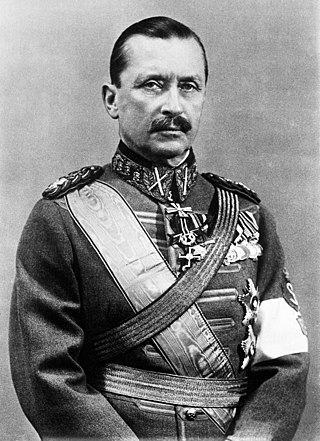
Carl Gustaf Emil Mannerheim was a Finnish military commander, aristocrat, and statesman. He served as the military leader of the Whites in the Finnish Civil War (1918), as Regent of Finland (1918–1919), as commander-in-chief of the Finnish Defence Forces during the period of World War II (1939–1945), and as the sixth president of Finland (1944–1946). He became Finland's only field marshal in 1933 and was appointed honorary Marshal of Finland in 1942.

The Finnish Army is the land forces branch of the Finnish Defence Forces. The Finnish Army is divided into six branches: the infantry, field artillery, anti-aircraft artillery, engineers, signals, and materiel troops. The commander of the Finnish Army since 1 January 2022 is Lieutenant General Pasi Välimäki.
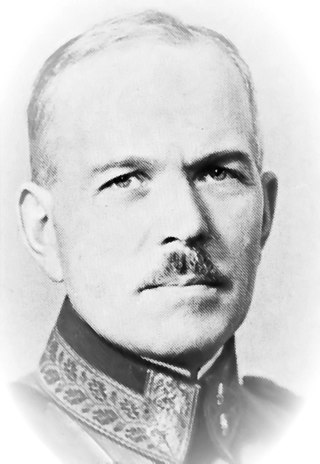
Karl Lennart Oesch was one of Finland's leading generals during World War II. He held a string of high staff assignments and front commands, and at the end of the Continuation War commanded three Finnish army corps on the Karelian Isthmus. He received numerous awards, including the Finnish Mannerheim Cross during his service. Following the end of the Continuation War, he was tried and convicted for war crimes relating to the treatment of Soviet prisoners-of-war.
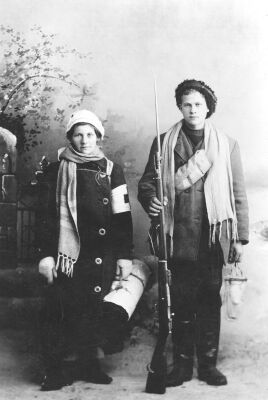
The Red Guards were the paramilitary units of the labour movement in Finland during the early 1900s. The Red Guards formed the army of Red Finland and were one of the main belligerents of the Finnish Civil War in 1918.

The Battle of Tampere was a 1918 Finnish Civil War battle, fought in Tampere, Finland from 15 March to 6 April between the Whites and the Reds. It is the most famous and the heaviest of all the Finnish Civil War battles. Today it is particularly remembered for its bloody aftermath as the Whites executed hundreds of capitulated Reds and took 11,000 prisoners who ended up in the Kalevankangas camp.

Aleksi "Ali" Aaltonen was a Finnish journalist and former lieutenant of the Russian Imperial Army, who served as the first commander-in-chief of the Finnish Red Guards from November 1917 to the end of January 1918. He was executed in Lahti after the Finnish Civil War in May 1918.
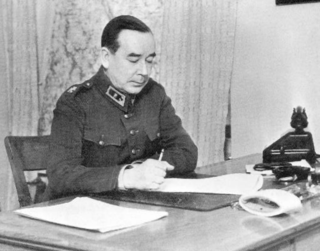
Johan Woldemar Hägglund was a Finnish lieutenant general during the Second World War, and an early volunteer of the Jäger Movement. He participated in the Eastern Front of World War I, the Finnish Civil War, the Winter War and the Continuation War, commanding army corps in the latter two. In 1944 and 1945, he was in charge of a committee investigating Finnish war crimes, especially those committed against prisoners of war.

Vyborg is a town and the administrative center of Vyborgsky District in Leningrad Oblast, Russia. It lies on the Karelian Isthmus near the head of Vyborg Bay, 130 km northwest of St. Petersburg, 245 km east of the Finnish capital Helsinki, and 38 km south of Russia's border with Finland, where the Saimaa Canal enters the Gulf of Finland. The most recent census population of Vyborg is 72,530 (2021 Census).

Finnish Civil War prison camps were operated by the White Finns to hold prisoners of war during and after the Finnish Civil War in 1918.

Finnish Guards' Rifle Battalion, colloquially known as just Finnish Guards was a Finnish military unit during 1829–1905 based in Helsinki. Continuing the legacy of the Finnish Training Battalion (1817), it was part of the Imperial Russian Army and the only Finnish unit of the Russian Imperial Guard. For the most of its history, the battalion also functioned as the only operational Finnish military unit. Because of its status as both a national showpiece and as a part of the Imperial Guard, it had a visible role in Finland.

Martin Wetzer was a Finnish jurist and general. He fought in World War I and during the Finnish Civil War fought on the side of the White movement. He also commanded Finnish volunteers in the Estonian War of Independence. He retired with the rank of lieutenant general and was promoted to general of the infantry in retirement.

The Battle of Helsinki was a 1918 Finnish Civil War battle, fought on 12–13 April by the German troops and Finnish Whites against the Finnish Reds in Helsinki, Finland. Together with the battles of Tampere and Vyborg, it was one of the three major urban battles of the Finnish Civil War. The Germans invaded Helsinki despite the opposition of Finnish White Army leader Carl Gustaf Emil Mannerheim who wanted to attack the capital city with his own troops after Tampere had fallen on 6 April. However, the Germans had their own interest in taking Helsinki as quickly as possible and then moving further east towards the Russian border. The city had been under Red control for 11 weeks since the beginning of the war.
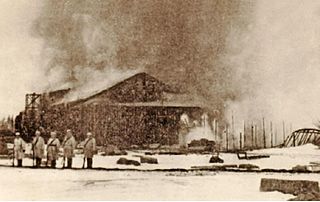
Battle of Rautu was a 1918 Finnish Civil War battle, fought in Rautu, Finland from 21 February to 5 April 1918 between the Finnish Whites and the Finnish Reds supported by the Russian Bolsheviks.

All-female units of the paramilitary Red Guards served in the 1918 Finnish Civil War. The first Women's Guards units formed in early February in the main Finnish cities. More than 15 female Guards units were established by the end of March 1918, with a total of about 2,000 women serving. The female Guards units consisted of young industrial workers, maids, and servants. Their average age was about 20, but some were as young as 14. The women served in auxiliary units in combat.
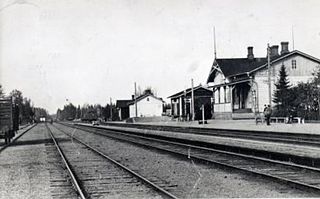
The Battle of Kämärä was a 1918 Finnish Civil War battle fought at the Kämärä railway station on 27 January 1918 between the Whites and the Reds. The battle began as a White Guard battalion from Vyborg attacked Kämärä on its march to the White-controlled side of the Karelian Isthmus. After taking the village, the Whites ambushed a Red train carrying a large cargo of weapons from Saint Petersburg, but were finally forced to leave the scene as they ran out of ammunition. The Battle of Kämärä is considered to be the first battle of the Civil War, although some minor incidents had occurred throughout January.

The Battle of Ahvenkoski was fought during the Finnish Civil War between 10 April and 5 May 1918 at Ahvenkoski, Finland between the German Empire and the Red Guards of the Finnish Socialist Workers' Republic, more commonly known as Red Finland. For most of the battle both sides occupied trenches along the Kymi river. Ahvenkoski and the surrounding Kymi valley region were the last strongholds of the Reds. The battle ended with the surrender of the last of the Red Guards on 5 May, which ended the war with White Finland and Germany defeating Red Finland.
Elisabeth Tigerstedt-Tähtelä is a Finnish diplomat. She is a Master in lawyer and has been Finnish Ambassador to several countries

Riihimäki prison camp was a prison camp operating in the area of the Riihimäki garrison after the Finnish Civil War in 1918. It held, at most, around 8 500 red guards. According to the war victims of Finland -database, a total of 981 prisoners died in camp, in result of executions, hunger and disease. The camp was closed down in October 1918, and the forced labour facility replacing it was shut down in the spring of 1921. The memorial of the prison camp is located in the Tienhaara part of Riihimäki.

Vietti Brynolf Nykänen was a Finnish architect, writer and politician.

Yrjö Ilmari Raikas was Finnish 1930s and 1940s right-wing extremist politician.
References
- ↑ Sisällissodan tapahtumia 1: sodan alkuvaiheet [ permanent dead link ] Pala Suomen historiaa. Viitattu 16.6.2015.
- ↑ Valkoisten voitto varmistui lopullisesti Archived 2016-05-02 at the Wayback Machine Suomi 80. Viitattu 16.6.2015.
- ↑ Korjus, Olli: Kuusi kuolemaantuomittua. Atena-kustannus, 2014. ISBN 978-952-30002-4-7. Teoksen verkkoversio
- ↑ Esikunnan tiedusteluosaston Luettelo B Archived 2015-09-24 at the Wayback Machine Suomen Sukututkimusseura. Viitattu 16.6.2015.